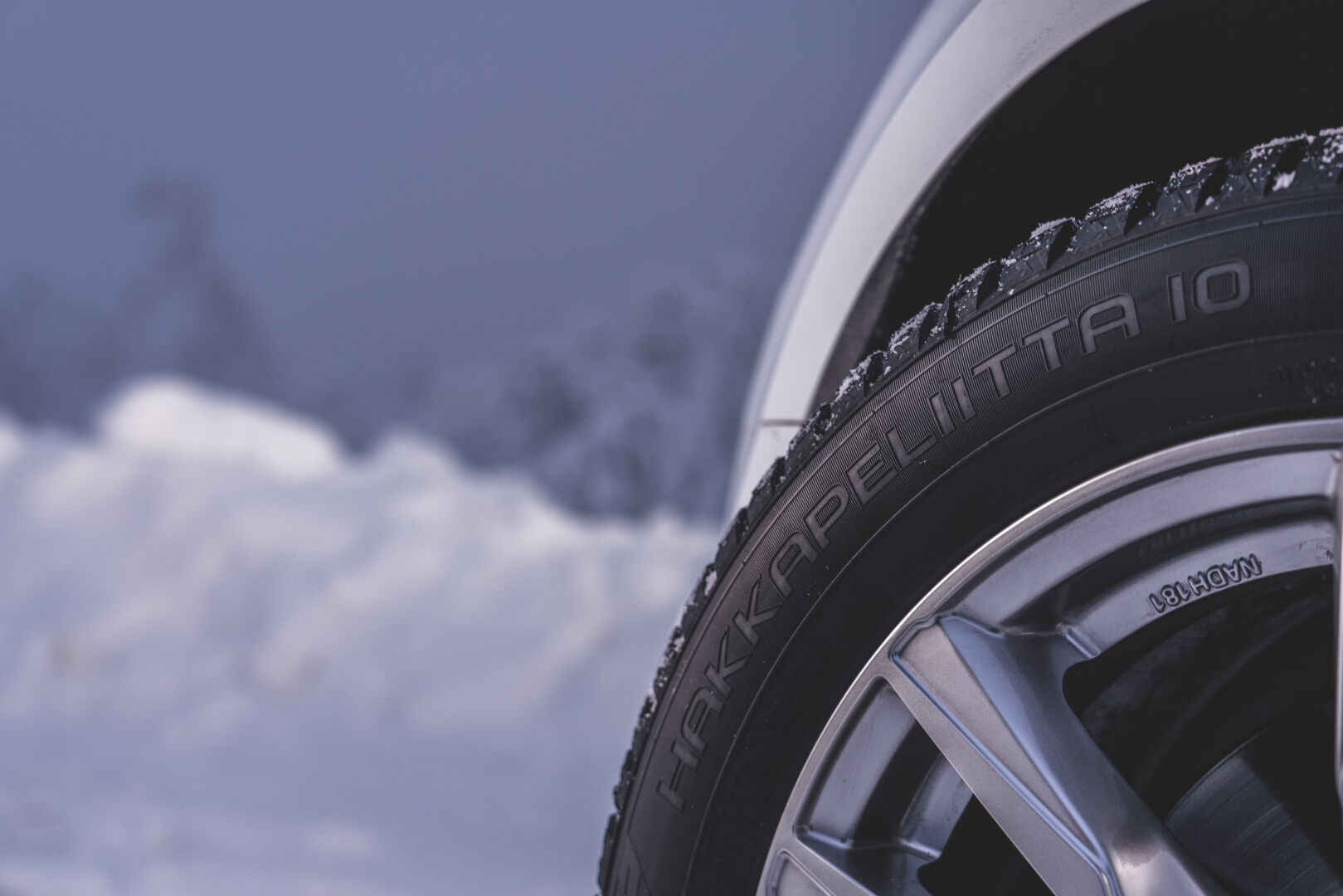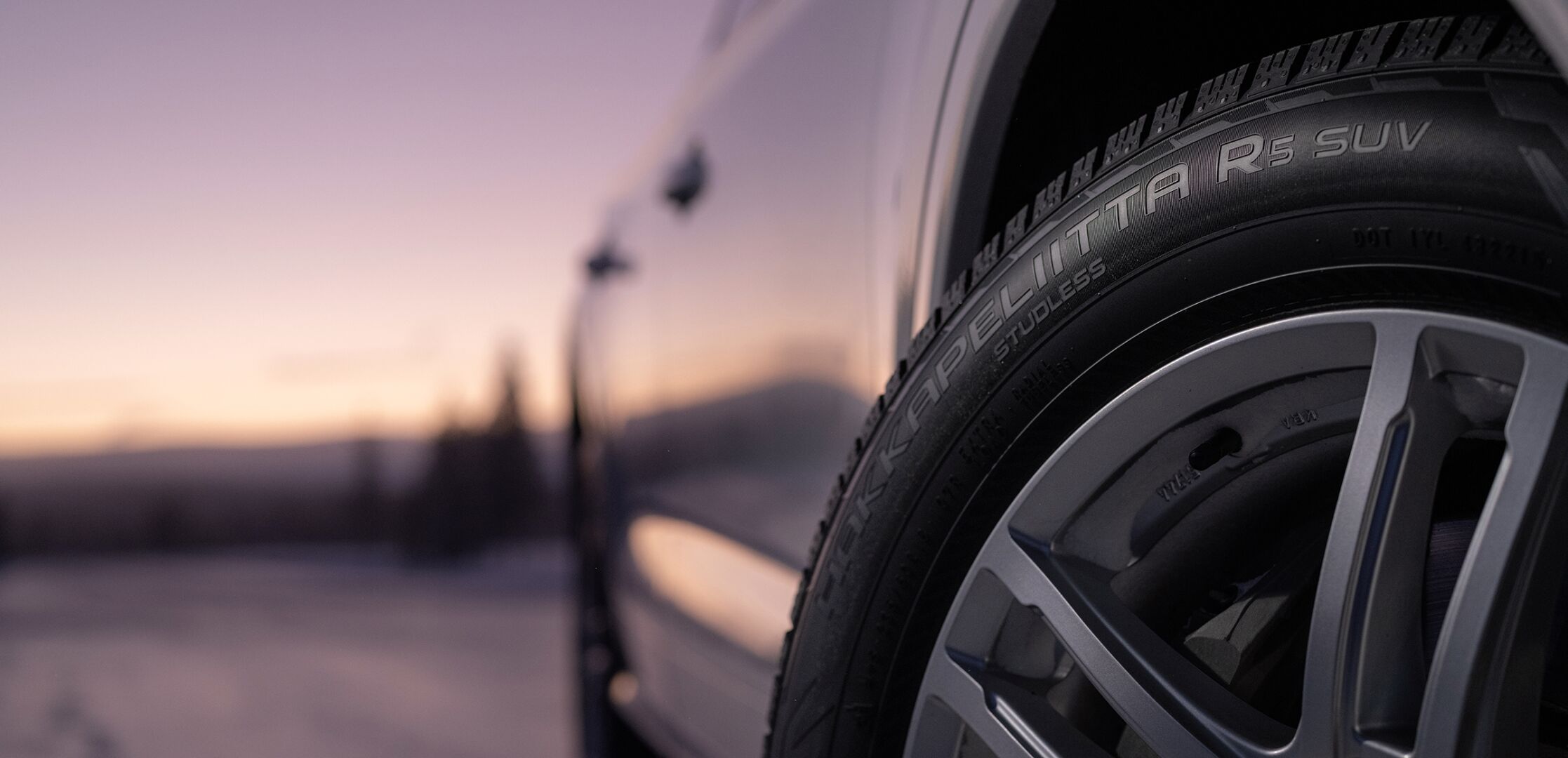
Cold weather affects the air pressure in your tires. Learn how to maintain the right tire pressure for winter weather.
The Importance of Proper Tire Pressure
The air pressure in tires impacts both driving safety and tire durability. Regularly check and maintain tire pressures at the level recommended by your car manufacturer; you can check this in your vehicle's owner's manual or on the sticker within your driver's-side door jam.
Temperature fluctuations, especially in cold weather, can affect how your tires retain air pressure. Adjust the pressures of winter tires to suit freezing conditions.
Use Higher Tire Pressure in Winter
As temperatures drop, so do tire pressures. In passenger car tires, pressures decrease about 1 PSI for every ten degrees of temperature drop. Therefore, it is recommended to maintain at least 2 PSI higher air pressure in winter tires compared to all season tire pressure recommendations.
Vehicle manufacturers may provide separate recommendations for winter and all-season tire pressures. Always follow the manufacturer's guidelines. If no separate recommended pressure is given for winter tires, add 2-3 PSI to the recommended air pressure. You can find air pressure recommendations:
-- On the sticker within the driver's-side door jam
-- In the vehicle's owner's manual
-- In the vehicle manufacturer's guides
Measure Tire Pressures Regularly, Especially in Cold Weather
Tire pressure decreases slightly in all conditions, particularly in cold weather and fluctuating temperatures. Check your tire pressures at least once a month to keep them at the right level. Also, check tire pressures when driving with a heavy load or on longer trips. Note that winter tire regulations may vary between states and provinces in the United States and Canada.
Measure tire pressures from cold tires for a more accurate result. Tires heat up during driving, so it's best to measure air pressure before driving. Ideally, measure pressures when the car has not been driven more than a few miles or kilometers.
If you check tire pressures in a warm garage, they can remain too low for outdoor winter air. For example, if the garage temperature is around +68 °F (+20 °C) and the outdoor temperature is 14 °F (-10 °C), the temperature difference is 54 °F (30 °C). In this case, the tire’s air pressure should be inflated at least 3 PSI higher due to the colder outdoor temperature the tires will be exposed to when the car is driven out of the garage.
Problems Caused by Low Tire Pressures
Under-inflated tires can cause various issues:
-- Uneven Wear: Tires wear unevenly, shortening their lifespan.
-- Increased Fuel Consumption: Driving with under-inflated tires increases fuel consumption.
-- Poor Steering Response: The steering response and driving experience suffer.
-- Longer Breaking Distance: Low tire pressures legthen braking distances and increase the risk of hydroplaning.
"People often ask why tires 'bounce' when driving in severe cold temperatures. This is because the air pressures have significantly dropped in the cold, and the tire has frozen or cooled down, leaving a permanent dent. The tire loses its shape until it warms up. Favor a slight overpressure to avoid these problems," says Matti Morri, former Head of Technical Customer Service at Nokian Tyres.

When you adjust the pressures of winter tires to the right level, you drive safer, save on fuel costs, and extend the lifespan of your tires. Proper storage of tires also extends their lifespan. During the off-season over the summer months, store your winter tires in a dry, cool, and light-protected space.
Check Tire Condition
Your winter tires wear more evenly when their air pressure is at the recommended level. Monitor tire wear by measuring tread depth. Tires can better direct slush from the road with greater tread depth.
To further promote even tire wear, ensure you rotate your tires regularly. When tires become too worn, it's time to buy a new set. Consult your local tire shop for an expert opinion.
By law, the tread depth of winter tires must be at least 5/32 of an inch (4 mm), depending on the country. However, safety features of the tires deteriorate significantly at the minimum limits. Purchase new winter tires when they wear to the 4 mm mark.
If you use studded tires, monitor the condition and quantity of the studs: "Today, winter does not automatically mean there will always be snow or ice on the roads. When driving on dry asphalt in winter, the studs can easily wear more than the rubber around them. This weakens the grip of the tire, especially on ice. Worn and detached studs can make controlling the car on slippery surfaces more difficult," Morri explains.
If the number of studs varies by more than 25 percent between tires, it's time to buy new studded tires. For example, Nokian Tyres Hakkapeliitta 10 studded tires offer extreme safety in demanding situations.
Drive Safely Throughout the Winter
Keep your tires in good condition with these tips:
-- Check Air Pressures Regularly. Measure the air pressure from cold tires and raise pressures by about 2-3 PSI in wintery cold weather.
-- Drive Predictably and Calmly. Avoid sudden braking, acceleration and aggressive steering movements.
-- Store Tires Properly. Store tires in a dark, dry, and well-ventilated space. Check air pressures after seasonal storage.
Driving in winter can be unpredictable. Maintaining proper air pressure and tire condition is crucial for safe winter driving. Check your tires regularly and replace them when their safety features deteriorate to drive securely in all conditions.
Please remember that it is the driver’s responsibility to ensure their tires are safe and suitable for their vehicle and to follow the vehicle’s manufacturer´s guidelines for proper use and maintenance. Consult your closest Nokian Tyres dealer or your vehicle’s manufacturer for specific advice.


